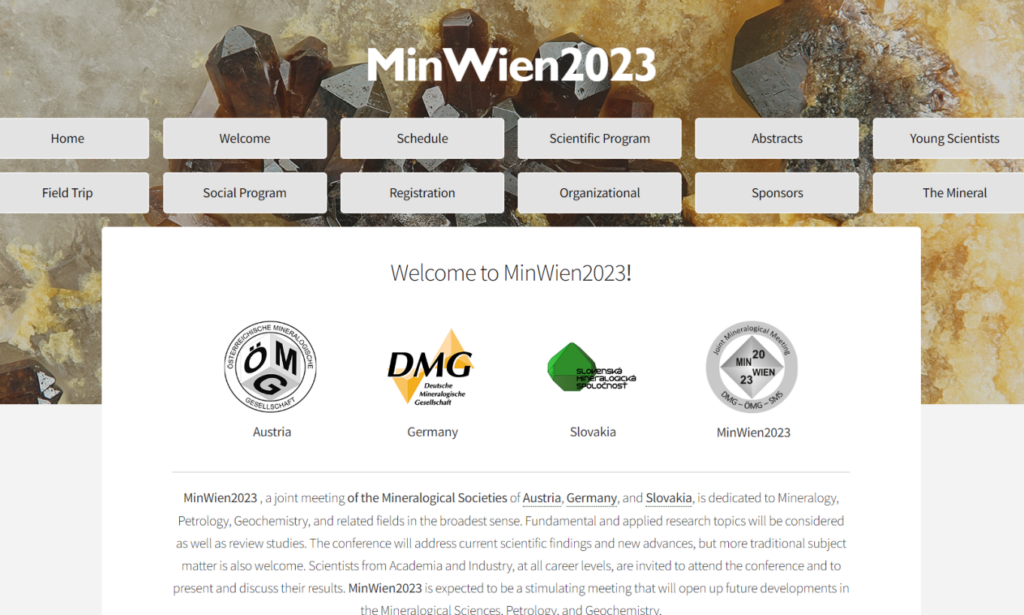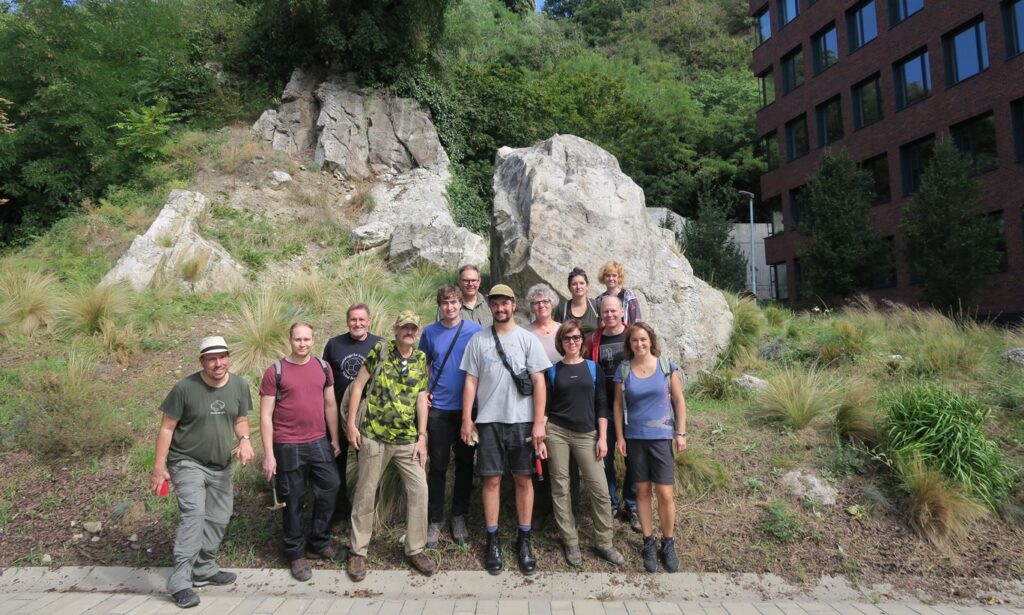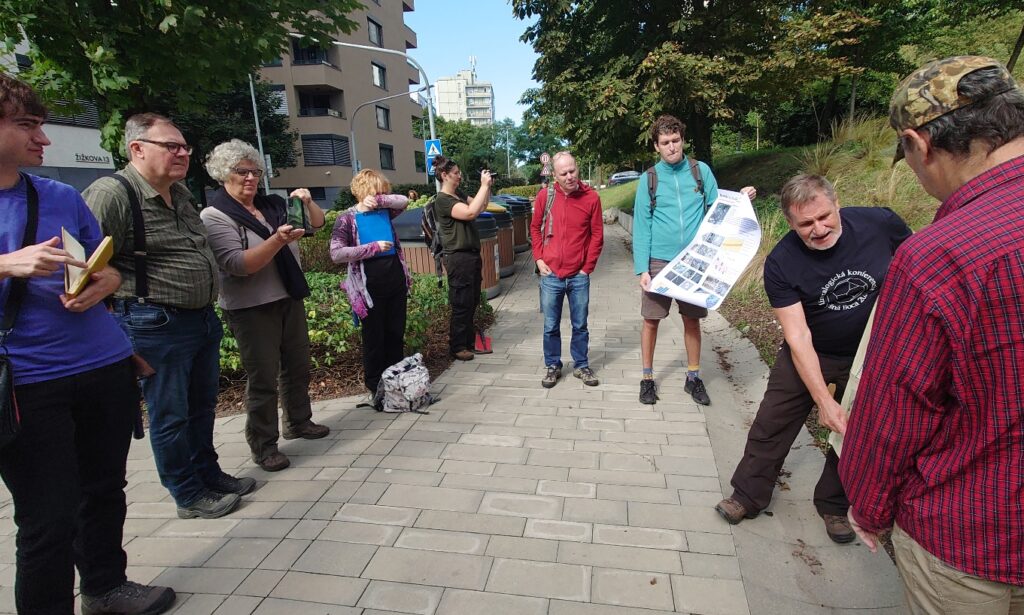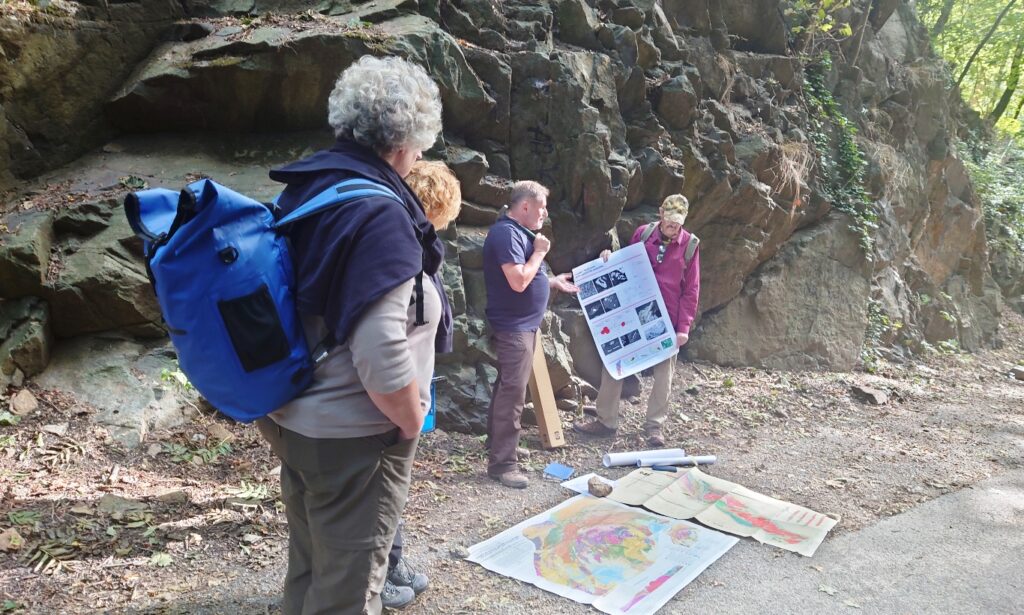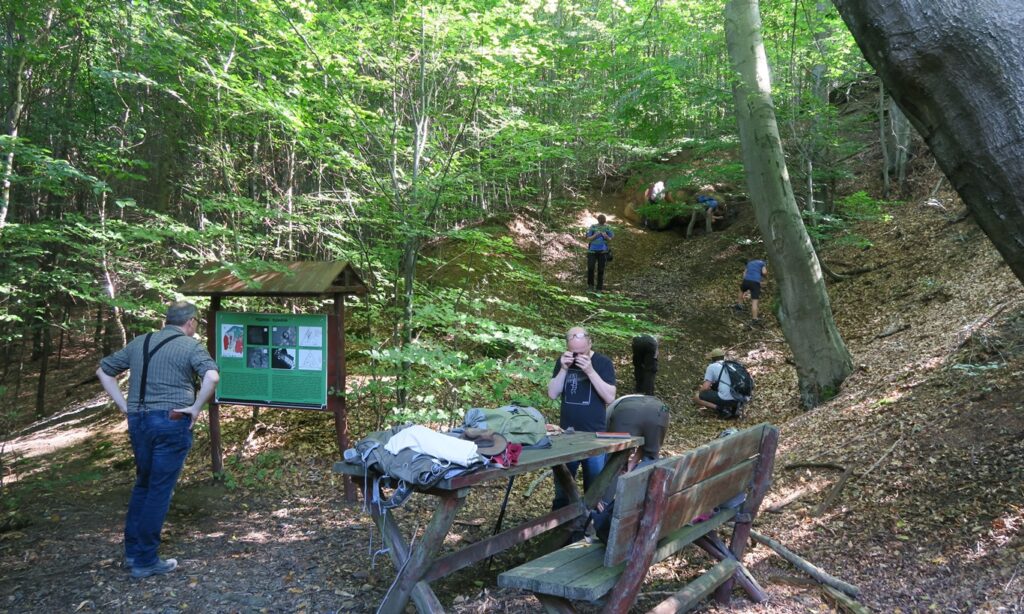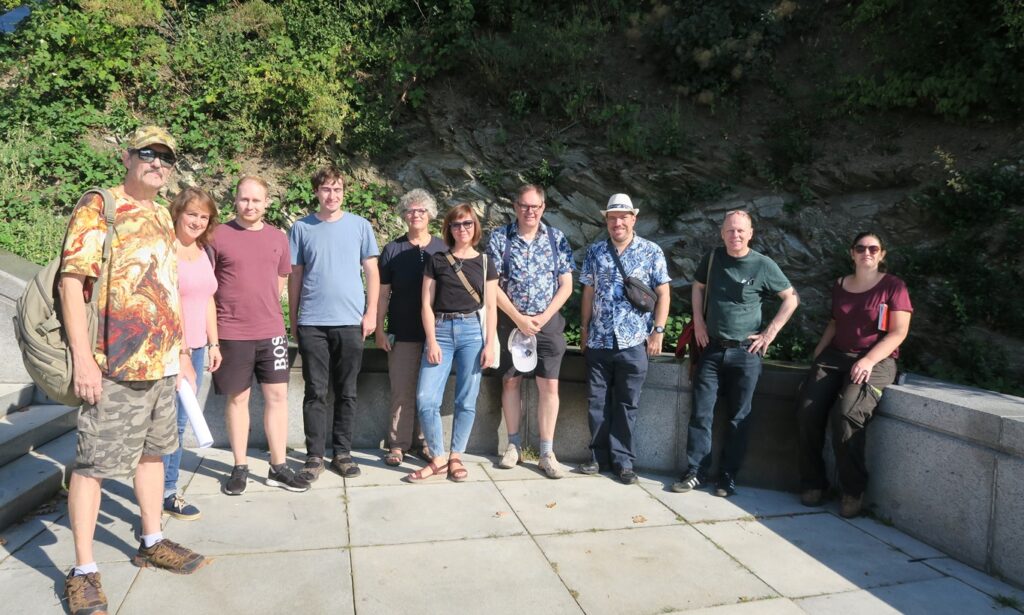The mineralogical conference MinWien2023, a meeting of the German Mineralogical Society and the Austrian Mineralogical Society, which was also joined by the Mineralogical Society of Slovakia this year, was held in Vienna at the GeoZentrum of the Faculty of Geological Sciences, Geography and Astronomy at the University of Vienna from September 19 to 21. Peter Bačík and Igor Broska from the Earth Science Institute of the SAS (ESI SAS) also participated in the conference Program Committee, led by Herta Effenberger and Christian Lengauer from the University of Vienna. Around 250 delegates took part in the meeting this year, including three employees of ESI SAS. For four days, 102 talks were given, and 79 posters were presented. One of the main topics of the conference was the late centenary of Professor Josef Zemann, and the mineral of the conference, zemannite, named after him, to which an entire section of the lectures was devoted.
The two-day pre-conference excursion, for which 11 participants from Germany and Austria signed up, was focused on the application of genetic mineralogy in solving problems of the geological development of the Malé Karpaty Mts. The excursion was organised by ESI SAS in cooperation with the Mineralogical Society of Slovakia. The excursion showed the geological structure of the Malé Karpaty Mts. with an emphasis on the development of the Bratislava and Modra granite massifs, which were formed between 359 and 345 million years, with localities in Bratislava and in the area of Pezinok and Modra. Moreover, during the excursion, there was also widely discussed the effect of granites on older black shales originally sedimented on the bottom of the deep sea, in which sulphide mineralisation has also been mined in the past, and vanadium-chromium silicate mineralisation exceptional on a world scale was developed. Similarly, attention was paid to the effect of the granite intrusion on the surrounding limestones, which produced contact calcium-silicate skarns with a unique mineral composition. The geological development after the formation of the Variscan granites of the Malé Karpaty Mts. was also described on the first sediments – quartzites, which sedimented on the granites at the beginning of the Mesozoic and contain exotic tourmalinite pebbles.
Text and photo: Peter Bačík a Igor Broska
